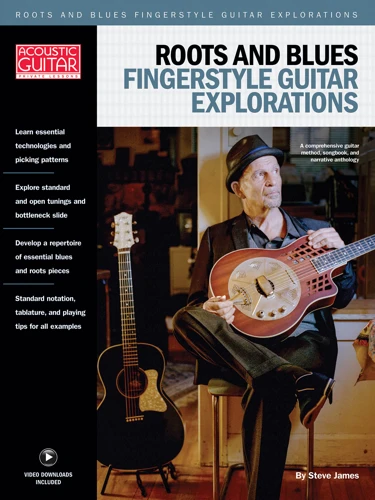Fingerpicking is a unique and captivating style of playing the guitar that has been a staple of country music for decades. In this blog post, we will explore the rich history of country fingerpicking, from its origins in traditional folk music to its modern-day manifestations in the hands of contemporary artists.
The Origins of Country Fingerpicking
Country fingerpicking has its roots in the traditional folk music of the British Isles, which was brought to the Americas by early European settlers. This music was characterized by its use of fingerstyle techniques, in which the player plucks the strings with their fingers rather than using a pick.
In the southern United States, this style of playing was adopted and adapted by African American musicians, who combined it with the rhythms and melodies of blues and gospel music. The result was a new, hybrid style of fingerpicking that would become a defining feature of country music.
The Early Masters of Country Fingerpicking
Some of the earliest and most influential masters of country fingerpicking include Maybelle Carter, Merle Travis, and Chet Atkins. These artists developed their own unique styles of fingerpicking, which would go on to influence generations of musicians.
Maybelle Carter, for example, is known for her distinctive “Carter Scratch” technique, which involves using her thumb to play the bass notes while her fingers play the melody. This style of playing has become a hallmark of country music and has been adopted by countless musicians since.
Merle Travis, on the other hand, is known for his intricate “Travis picking” style, which involves playing a steady bass line with the thumb while using the fingers to play syncopated rhythms and melodies. This style of playing has become a staple of country fingerpicking and has been used by artists such as Tommy Emmanuel and Jerry Reed.
Chet Atkins, often referred to as “Mr. Guitar,” was another early master of country fingerpicking. He developed a unique style of playing that combined elements of country, jazz, and classical music. His fingerstyle technique, known as “Atkins style,” involves using the thumb to play the bass notes while using the fingers to play the melody and chords.
The Evolution of Country Fingerpicking
Over the years, country fingerpicking has evolved and adapted to incorporate new influences and techniques. In the 1960s and 1970s, for example, the genre was heavily influenced by the folk and rock movements of the time. Artists such as John Denver and James Taylor brought a more contemporary sound to country fingerpicking, incorporating elements of pop and rock into their music.
In more recent years, country fingerpicking has continued to evolve, with artists such as Keller Williams and Billy Strings incorporating elements of bluegrass, jazz, and electronic music into their playing. This has resulted in a diverse and vibrant scene, with musicians continuing to push the boundaries of what is possible with the guitar.
The Importance of Country Fingerpicking
Country fingerpicking is an important part of the cultural heritage of the United States. It is a style of playing that has been passed down from generation to generation, with each artist adding their own unique spin to the tradition.
In addition to its cultural significance, country fingerpicking is also an important technical skill for guitarists to master. The ability to play intricate fingerstyle arrangements requires a high level of skill and precision, and can open up a whole new world of musical possibilities.
Learning Country Fingerpicking
If you’re interested in learning country fingerpicking, there are a few things you can do to get started. First, listen to recordings of the early masters of the style, such as Maybelle Carter, Merle Travis, and Chet Atkins. Pay attention to the way they use their fingers to create intricate rhythms and melodies.
Next, try practicing some basic fingerstyle exercises to build up your finger strength and dexterity. This can include things like playing scales and arpeggios using your fingers, as well as practicing basic chord progressions.
Once you have a solid foundation in fingerstyle technique, you can start learning some of the more advanced country fingerpicking patterns and arrangements. This can include things like the “Carter Scratch” and “Travis picking” techniques, as well as more complex chord progressions and melodies.
Interested in the history of country music guitar playing techniques? Learn about the origins of flatpicking in country music history and the iconic role of the Telecaster in country music evolution. Discover classic country strumming styles and fingerpicking patterns in classic country strumming and fingerpicking patterns. Dive into the secrets of famous country guitarists’ fingerpicking techniques in fingerpicking secrets for a deep understanding of this traditional music genre!
Conclusion
Country fingerpicking is a rich and fascinating style of playing that has a long and storied history. From its origins in traditional folk music to its modern-day manifestations, country fingerpicking has evolved and adapted to incorporate new influences and techniques.
Whether you’re a beginner just starting out or an experienced guitarist looking to expand your skills, country fingerpicking is a style of playing that is sure to inspire and challenge you. So why not give it a try and see where it takes you?


